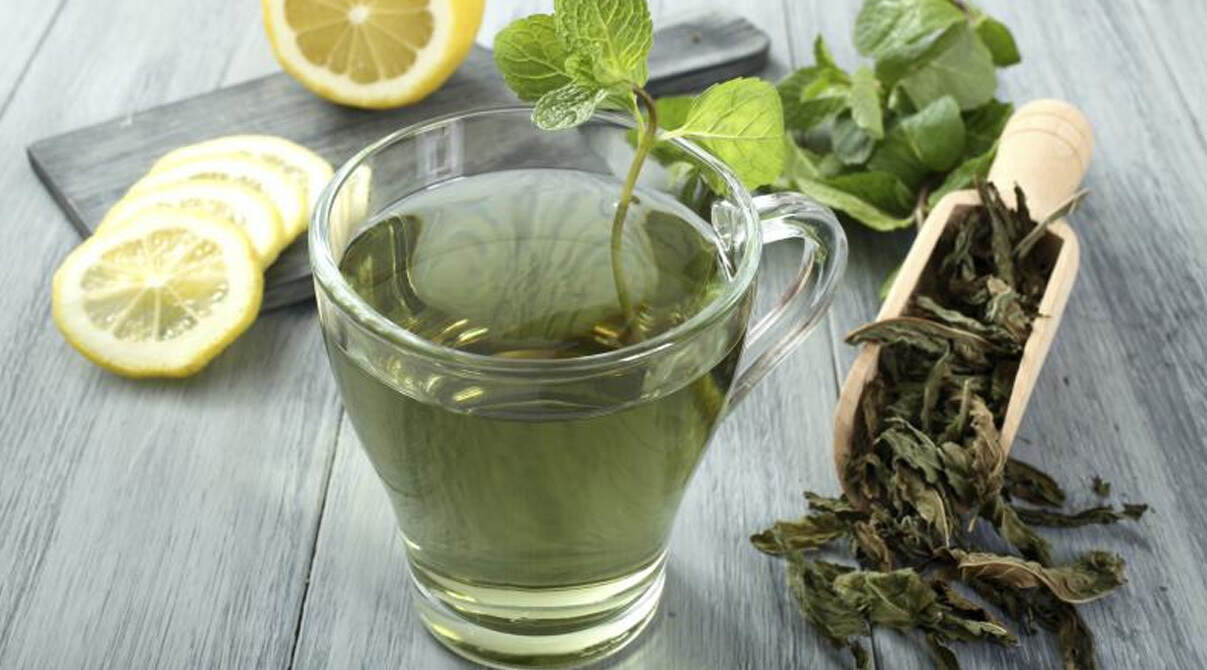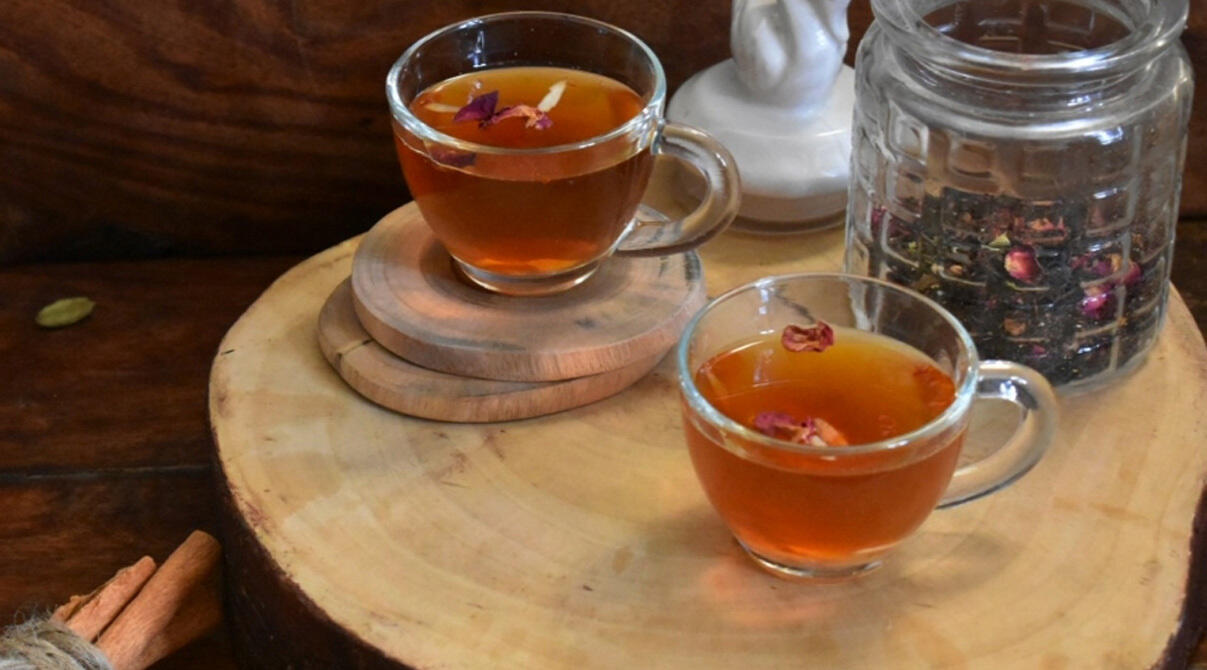Pakistan is a country with a rich culture and history, and one of the things that makes it so special is its delicious food. One of the most popular drinks in Pakistan is kahwa, a type of green tea that is often flavoured with spices like cardamom, cloves, and cinnamon. Kahwa is not only delicious but also has many health benefits, which is why Pakistani people love it.
For many, Kahwa is a beloved green tea. Its unique flavor and health benefits have made it a favorite among tea drinkers for centuries.
Kahwa – A Locally Beloved Green Tea
Pakistanis have been consuming Kahwa for centuries. Its original use was as a medicinal drink to help with digestive problems. These days, people still use kahwa as a home remedy for stomach or respiratory ailments, but it is also enjoyed simply for its flavour.
What is Kahwa?
Kahwa is traditionally prepared from green tea (Camellia sinensis), and is commonly drunk in India, Pakistan, Afghanistan, Iran, and other parts of Central Asia.
Kahwa is a traditional green tea that is usually served with spices. It uses some specific spices for a unique memorable taste. Kahwa can be with or without milk, and sometimes people add almonds or saffron for extra flavor.
Originally, people used a brass boiler or a samovar to brew the exotic blend of Kahwa, which consists of Kashmiri green tea leaves, whole spices, almonds, and saffron. The samovar features a cavity in the centre for the insertion of hot coal, and the area around it boils water and other ingredients for tea.
Native to India and Pakistan, Kahwa is a blend of green tea leaves, spices and herbs. The most common spices people use in Kahwa are cardamom, cloves and cinnamon. These spices give Kahwa its characteristic flavor and aroma.
Traditionally, people drink Kahwa without milk or sugar. This allows the drinker to fully enjoy the subtlety of the flavors. However, some people do add milk or sugar to their Kahwa for personal preference.
Related: Authentic Pakistani Tea & the Way Pakistanis Drink Chai
The History of Kahwa
It’s noteworthy to note that the word “kahwa,” which also goes by the name Arabic kahwa, is Arabic in origin. As we go further back in time, we also learn that Kashmiris traveled to Tibet to receive their particular teas from China.
Although some claim that it originated in the Yarkand valley under the Kushan empire in the first and second centuries AD, historians generally believe that Kahwa tea leaves arrived in Kashmir via the infamous Spice Route. Although its exact origins are still up for question, Kahwa is now Kashmir’s national drink and people frequently refer to it as the “magic tea.” The existence of magic tea in “Heaven on Earth” makes perfect sense.
Types of Kahwa
There are various varieties of Kahwa Tea, each with a unique flavour and aroma that comes from the respective ingredients.
Kashmiri Kahwa
Kashmir never ceases to astound with its breathtaking scenery, snow-capped mountains, ever-enchanting valleys, and a rich culture. Kashmiri Kahwa originates from this heavenly region, which is a haven for many of nature’s marvels.
From the first sip, this magical elixir enchanted the tea enthusiasts. The numerous health advantages, eye-catching golden color, rich, gently spicy flavor, and powerful aroma put Kashmiri Kahwa in the forefront.
Due to its powerful flavors, it grew in favour over time in regions of Central Asia. As the tea brews, the richness of the saffron combines with the flavors of the cardamom, cloves, and cinnamon to produce an indelible aroma. You get a rich, delicious, and reviving beverage when the spices combine with the almonds and excellent quality green tea.
Peshawari Kahwa
The Pakhtoons introduced the Peshawari Kehwa or Kahwa Tea, a green tea with a pleasant aroma. Although Kahwa lovers are present all over Pakistan, they are particularly notable in the Northern Areas, Peshawar, and other nearby areas. The Pakhtoons/Pathans regard it as their standard beverage and consider it to be a part of their culture. When it comes to the kehwa’s ingredients, they include green tea leaves, cardamom pods, sugar to taste, and water which they boil until they achieve a certain hue. To improve the flavour, people garnish it with dry fruits like pistachio, walnuts, and almonds, among others.
Arabic Kahwa
The most well-known Arabian dish is qahwa, a traditional Arabic tea recipe. Cardamom and green coffee beans are used to make qahwa. It frequently comes with dates. The little, handle-less cups are served from a unique coffee maker known as a dallah. The majority of social occasions, including weddings and parties, also provide it. During Ramadan, qahwa is frequently taken after iftar, the fast-breaking meal.
Turkish Kahwa
The popular black and green variety of tea is highly beloved among Turks. Every hour of the day, especially breakfast in the mornings and family get-togethers at night, sees the use of this beverage.
In their respective languages, Turks and Kashmiris refer to it as “çay” and “chai,” respectively.
It is customary in Turkish households to provide guests a cup of tea. The beverage is made in double teapots known as “çaydanlık,” but other teapot varieties known as “samovar” are also utilised in the nation, particularly in coffee shops since they enable the tea to remain hot for an extended period of time. Turkish tea is traditionally served with sugar and is served in tulip-shaped glasses called “ince belli.”
Green tea is also extremely popular in China, Korea and Japan. These countries have their own reen tea variety and special methods for preparing it.
Related: Fame Of Food Culture In Pakistan
Some Facts About Pakistan’s Love for Tea and Kahwa
Pakistani tea is so great every time. Pakistanis have a special kind of love for tea. This includes both green tea or Kahwa and the more popular black tea. Tea, in Pakistan, is produced with love.
These are some of the great things about Pakistani tea:
- Tea is a legal drug in society – Pakistanis typically wait till they’ve had a nice cup of karak, or strong, tea, to start their day. On the other hand, if there isn’t evening tea, their day is likewise lacking.
- For Pakistanis, tea symbolises hospitality – Even if you are captured by your sworn enemies, tea will help you communicate.
- Every occasion calls for chai (tea) – It serves as the binding agent in the development of new connections, the preservation of existing ones, and the defusing of tense circumstances to bring people together.
- Among the most affordable drinks – When it comes to tea, there is no class difference. Everyone enjoys a nice cup of tea, including the wealthy, middle class, and labourers. No matter whatever city you are from, tea unites all of humanity. The combination of it and a bag of simple biscuits or a paratha makes the ideal breakfast.
- Contains a variety of tea – Some folks enjoy their black tea, also known as chai, without milk and with a squeeze of lemon, while others go absolutely crazy over a decent cup of doodh patti from a neighboring dhaba. Some have an extreme love for Kahwa or green tea and would not start and end their day without it.
Benefits of Kahwa
Pretty much all individuals wake up in the morning and start drinking a warm sip of tea. Scant research has been made, however, on the health effects of teas. Tea gives you the strength to face the day by making you feel refreshed, and energized, ahead. The contents of Kahwa tea have enormous benefits.
Good for your Digestive System
Kahwa tea improves your digestion and helps clean your digestive system. In addition, you’ll receive a cleanse of your digestive tract as well as improved metabolism. Besides, it can be used to treat digestive problems like constipation. Kahwa tea is very helpful during winters. Among other functions, it can aid in improving your digestion and cleaning your digestive tract.
Perfect Remedy for Weight Loss
It reduces fat in most of the world’s Kashmiri communities, where it’s served together with meals after, as doesn’t just assist in digestion but also helps keep fat out of the body, which is beneficial for people who are trying to lose weight. It also aids in preventing the buildup of cholesterol inside the blood and diminishes the risk of cardiovascular disease.
Immunity Booster
The saffron found in Kahwa is an effective source of vitamin B12, which aids in the resurgence of the body’s defense framework. The numerous antioxidants found in Kahwa tea can aid your immune system from being ill.
Reduces Stress
Due to its abundance of antioxidants, Kahwa tea assists you to feel calmer and at a lower stress level. It helps to minimize the consequences of tension on the body caused by toxins that stress may induce. A small sip of kahwa tea can successfully liberate all the strain and uneasiness brought on by professional tests or routine tasks.
Solution for Respiratory Diseases
It is an ideal treatment for sore throats, and clearing phlegm in influenza. The tea warms the throat and relieves clogging in the chest. This makes kahwa an excellent treatment for colds and coughs. So, if you’re experiencing a cold, give kahwa a chance, since it serves as a very efficient remedy for your problem.
Contains Antioxidizing Agents
The existence of antioxidants aids to moisturize your skin by lowering the effects of acne. The tea also has crushed almonds which work well to wash the skin and give a rejuvenating look and feel. A sip of hot Kahwa tea can give you a wholesome and glowing complexion, particularly during wintertime. In low-temperature seasons, you can experience a grayish and dry look and feel of your skin which looks unhealthy.
Energy Supplement
Kahwa tea not only starts your morning but can also help you finish a dull day. It is one of the most efficient beverages you can have to boost physical energy, for triathletes, and weightlifters. It supplies enough energy, helping you to be proactive throughout the day. A group of Kahwa tea drunk at midday may help you regain your passion for the work and improve your productivity throughout the day.
How to Prepare the Best Kahwa?
Preparation of Kahwa takes only 15 to 20 minutes and is really easy. To prepare Kahwa, you need green tea leaves about 1 teaspoon, some green cardamoms, cinnamon sticks, a few almonds, sugar about 3 teaspoons and saffron. It is optional, but if you add 2-3 strands of it, you’ll get the authentic magical taste of Kahwa.
Once you’ve gathered all the ingredients, follow these steps:
Step 1: Cinnamon and cardamom should be ground into a powder. Crush the almonds, then set them aside. Three cups of water, ground kahwa tea leaves, sugar, cardamom-cinnamon powder, and saffron should all be added to a pan.
Step 2: Maintain a boil. Boil the tea for five to six minutes, or until it gets a pale golden colour. Into tea glasses, strain.
Step 3: Serve hot with the almonds that have been finely powdered on top of each cup.


